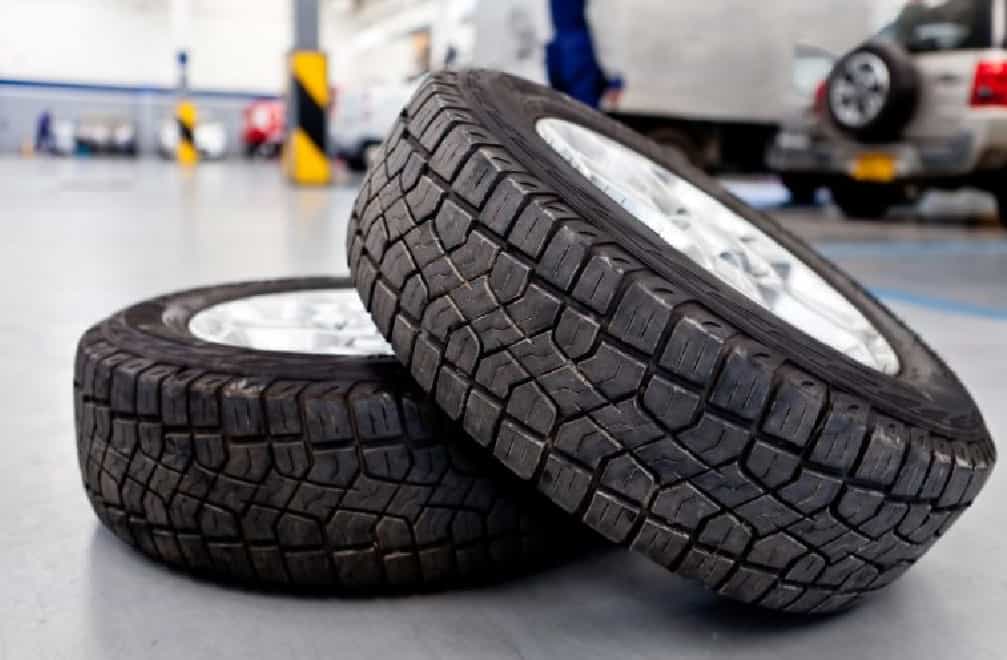Not sure which tire to choose? Our 305 vs 315 tires comparison should help you out!
In the world of tires, size matters. When it comes to choosing between 305 and 315 tires, you’re faced with a decision that can greatly impact your vehicle’s performance.
Will the wider stance of the 315s provide superior traction? Or will the agility and handling of the 305s reign supreme?
Buckle up as we dive into the tire arena, dissecting the pros and cons of these two heavyweights.
Get ready to unravel the secrets behind tire widths and unleash the battle of the rubber to determine which size will conquer the road for your driving pleasure. Let the showdown begin!

Contents
Know The Difference: 305 Vs 315 Tires
When it comes to selecting the ideal tires for your vehicle, one of the critical factors to consider is the width. The width of a tire plays a significant role in determining its performance characteristics, including traction, handling, and overall driving experience.
Check out our comparison of 305 and 315 tires, exploring their differences, benefits, and potential trade-offs. By the end, you’ll have a clearer understanding of which width is best suited for your driving style and vehicle requirements.
1. Understanding Tire Width
Tire width is measured in millimeters and refers to the distance between the outer sidewalls of the tire. It plays a crucial role in determining the tire’s contact patch with the road surface. A wider tire offers a larger contact patch, providing increased grip and traction.
2. Traction and Performance
When it comes to traction, wider tires tend to offer superior grip, particularly in situations where increased traction is required, such as during hard acceleration or cornering. The larger contact patch of a 315 tire provides enhanced stability and improved grip, especially on dry surfaces. However, it’s essential to note that the difference in traction between 305 and 315 tires may not be significant for everyday driving scenarios.
3. Handling and Responsiveness
Narrower tires, like the 305s, often provide improved steering response and agility. The reduced width allows for quicker turn-in and more precise handling, making them ideal for spirited driving or track use. On the other hand, wider 315 tires offer enhanced stability during high-speed maneuvers and a more planted feel on the road. They may be a preferred choice for those seeking stability and a confidence-inspiring driving experience.
4. Appearance and Fitment
Tire width also affects the visual appeal of your vehicle. Wider tires can give a more aggressive and muscular stance, enhancing the overall aesthetics. However, it’s crucial to consider factors such as clearance, wheel fitment, and potential rubbing issues when choosing wider tires, as they may require modifications or adjustments to ensure proper fitment.
5. Fuel Efficiency and Comfort
It’s important to consider that wider tires may have a slight impact on fuel efficiency. The increased rolling resistance associated with wider tires can lead to a slightly lower fuel economy compared to narrower counterparts. Additionally, wider tires may transmit more road imperfections, potentially affecting ride comfort.
6. Vehicle Specifics and Recommendations
When deciding between the 305 and the 315 tires, you need to consider a few things such as your vehicle’s make and model, the driving conditions, and your suspension setup. It’s advisable to consult your vehicle manufacturer’s recommendations and consider the advice of tire professionals who can provide guidance based on your specific requirements.
Frequently Asked Questions
A: The main difference lies in their width. A 305 tire is narrower than a 315 tire, affecting factors like traction, handling, and appearance.
A: Generally, wider tires like the 315s offer better traction due to their larger contact patch, providing increased grip on the road surface.
A: Yes, narrower tires like the 305s often offer improved steering response and agility, making them suitable for spirited driving or track use.
A: Yes, the wider stance of 315 tires offers enhanced stability during high-speed maneuvers and a more planted feel on the road.
A: It depends on your vehicle’s specifications and clearance. Switching to wider tires may require modifications, such as adjusting wheel fitment or considering potential rubbing issues.
A: Wider tires may have a slight impact on fuel efficiency due to increased rolling resistance. However, the difference in fuel consumption is generally minimal.
A: Wider tires like the 315s often provide a more aggressive and muscular stance, enhancing the visual appeal of the vehicle.
A: Consider factors such as driving style, vehicle compatibility, road conditions, and personal preferences. Consult your vehicle manufacturer’s recommendations and seek guidance from tire professionals for informed decision-making.
A: Wider tires may reduce fuel efficiency slightly and transmit more road imperfections, potentially affecting ride comfort. Narrower tires may offer less grip in certain driving conditions.
A: It is generally not recommended to mix tire widths on the same axle. For optimal performance and safety, it is advisable to maintain consistent tire widths on each axle.
Read More: 245 Vs 275 Tires – Key Differences You Need To Know
Wrap Up
The battle between 305 and 315 tires ultimately comes down to finding the right balance between traction, handling, appearance, and personal preferences. While wider tires like the 315s offer increased grip and stability, narrower tires such as the 305s provide enhanced steering response and agility. Consider factors such as driving style, road conditions, and vehicle compatibility when making your decision.
Remember, tire selection is a crucial aspect of your vehicle’s performance and safety. Whether you opt for the wider footprint of 315 tires or the nimbleness of 305 tires, ensure that the chosen size is compatible with your vehicle and aligns with your intended driving experience. Consult with tire professionals to ensure you make an informed decision that optimizes both performance and safety on the road.
Information is being provding in this article is awsome and fully understandable. Thanks for sharing.
Thank you!